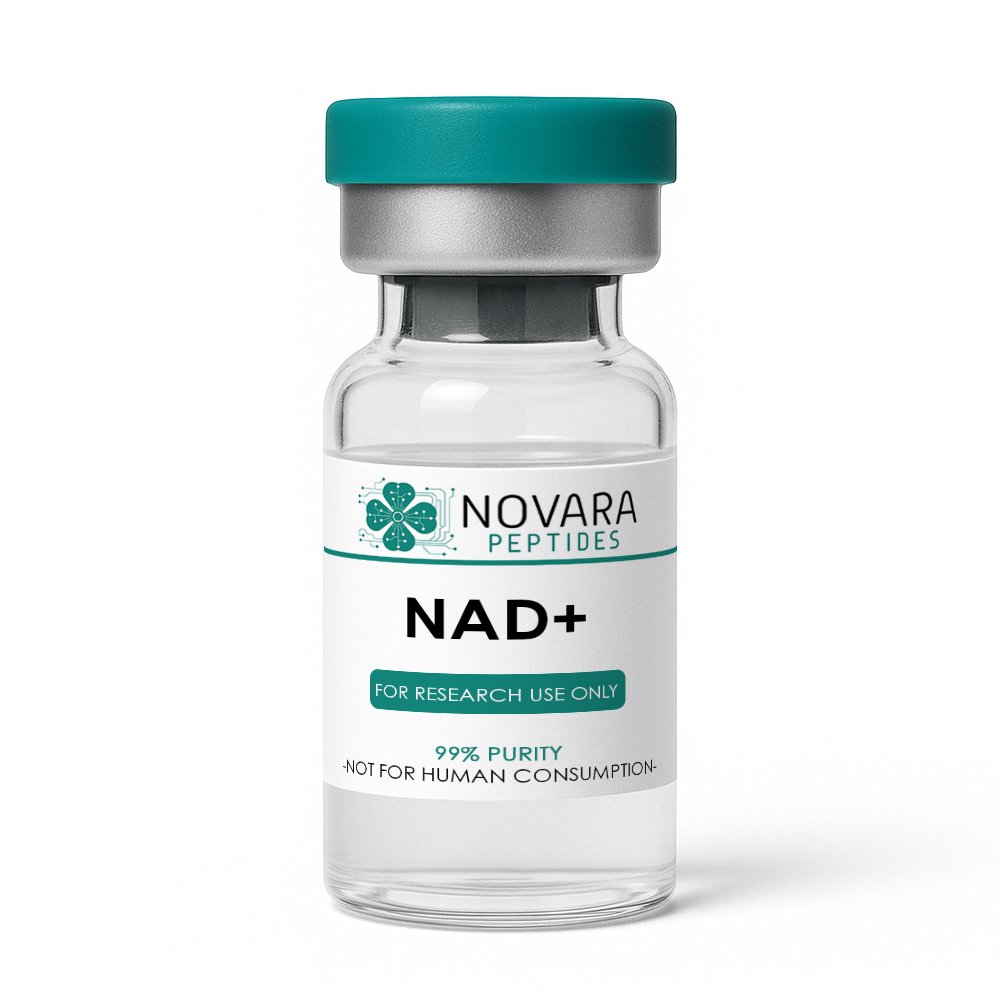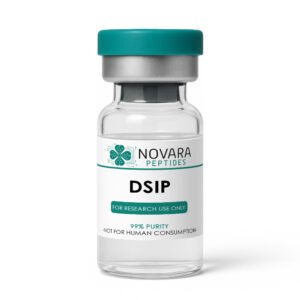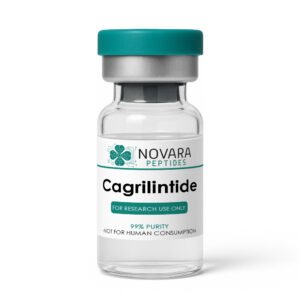NAD+ – 500mg
$ 45.00
All products are for laboratory research purposes only. Not for human consumption, medical, or veterinary use. ION Peptides does not condone or support the use of peptides outside of controlled scientific research. By purchasing, you acknowledge that you are a qualified researcher or institution. You must be 21 or older.




NAD+ (Nicotinamide Adenine Dinucleotide)
Tagline: Cellular Energy Cofactor
Product Description
NAD+ (Nicotinamide Adenine Dinucleotide) is a vital coenzyme found in all living cells. It plays a central role in cellular metabolism, acting as an electron carrier in redox reactions and influencing multiple biological pathways.
In scientific research, NAD+ has become a focal point for studies related to energy metabolism, mitochondrial function, aging, and stress responses. Researchers value NAD+ for its ability to provide insight into molecular processes that underpin cellular health and metabolic regulation.
For laboratory and scientific research only. Not for human consumption.
Why Researchers Choose NAD+
High-purity research compound, verified for laboratory use
Stable formulation designed for reliable experimental outcomes
Easy to reconstitute and integrate into laboratory protocols
Relevant for diverse fields including metabolism, aging, and immunology
Consistent batch-to-batch quality for reproducible results
Supplied in research-ready form for efficient handling
Important Note
For laboratory and scientific research only. Not for human consumption.
| Specification | Detail |
|---|---|
| Chemical Formula | C21H27N7O14P2 |
| Molecular Mass | 663.43 g/mol |
| CAS Number | 53-84-9 |
| Form | Lyophilized powder |
| Shelf Life | 24 months (unopened, properly stored) |
| Intended Use | Laboratory and scientific research only |
| Storage | -20°C, protected from light and moisture |
Research
Metabolism & Energy Regulation
NAD+ is central to metabolic processes, particularly in glycolysis, the tricarboxylic acid (TCA) cycle, and oxidative phosphorylation. Research demonstrates its role as a key electron carrier, making it essential for ATP production and cellular energy balance [1].
Aging & Longevity
Studies show that NAD+ levels decline with age, impacting mitochondrial efficiency and cellular repair pathways. NAD+ supplementation in animal models has been associated with improved metabolic resilience and extended healthspan [2].
DNA Repair & Stress Response
NAD+ acts as a substrate for enzymes like PARPs and sirtuins, which regulate DNA repair and cellular stress responses. Research links NAD+ availability to genomic stability and protection against oxidative stress [3].
Immune System Modulation
Evidence suggests NAD+ influences immune signaling pathways, with potential relevance for inflammation and adaptive immunity studies [4].
References
Belenky, P., Bogan, K. L., & Brenner, C. (2007). NAD+ metabolism in health and disease. Trends in Biochemical Sciences.
https://brennerlab.net/files/belenky07a.pdfGomes, A. P., et al. (2013). Declining NAD+ induces a pseudohypoxic state disrupting nuclear-mitochondrial communication during aging. Cell.
https://www.cell.com/fulltext/S0092-8674%2813%2901521-3Cantó, C., & Auwerx, J. (2011). NAD+ as a signaling molecule modulating metabolism. Cold Spring Harbor Symposia on Quantitative Biology.
https://europepmc.org/articles/PMC3616234Chini, C. C. S., et al. (2018). NAD and the aging process: Role in life, death and everything in between. Molecular and Cellular Endocrinology.
https://mayoclinic.elsevierpure.com/en/publications/nad-and-the-aging-process-role-in-life-death-and-everything-in-be
Mechanism of Action (How NAD+ Works)
Functions as a coenzyme in redox reactions, transferring electrons in metabolic pathways [1].
Serves as a substrate for sirtuins, influencing gene expression and metabolic regulation [2].
Provides substrate for PARP enzymes, contributing to DNA repair and genomic maintenance [3].
Regulates calcium signaling and cell survival pathways [4].
Supports mitochondrial function and energy production efficiency [2].
References
Belenky, P., Bogan, K. L., & Brenner, C. (2007). NAD+ metabolism in health and disease. Trends in Biochemical Sciences.
https://brennerlab.net/files/belenky07a.pdfGomes, A. P., et al. (2013). Declining NAD+ induces a pseudohypoxic state disrupting nuclear-mitochondrial communication during aging. Cell.
https://www.cell.com/fulltext/S0092-8674%2813%2901521-3Cantó, C., & Auwerx, J. (2011). NAD+ as a signaling molecule modulating metabolism. Cold Spring Harbor Symposia on Quantitative Biology.
https://europepmc.org/articles/PMC3616234Chini, C. C. S., et al. (2018). NAD and the aging process: Role in life, death and everything in between. Molecular and Cellular Endocrinology.
https://mayoclinic.elsevierpure.com/en/publications/nad-and-the-aging-process-role-in-life-death-and-everything-in-be
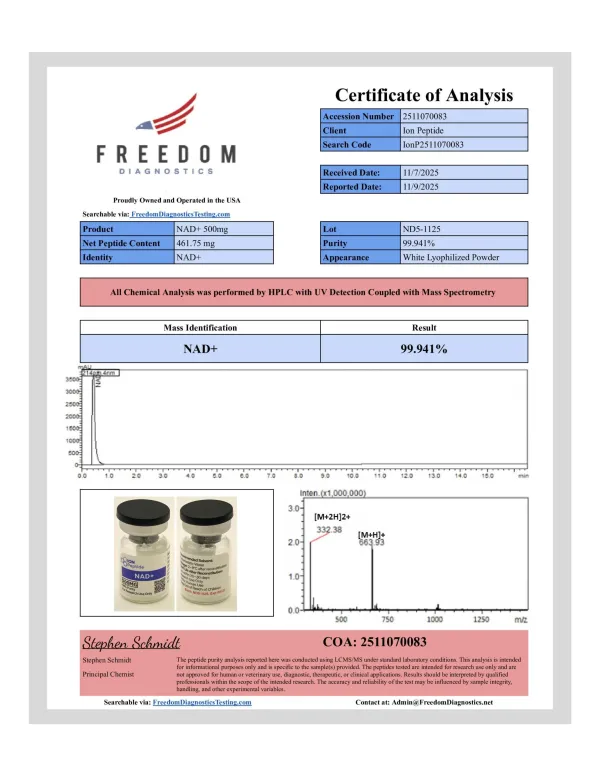
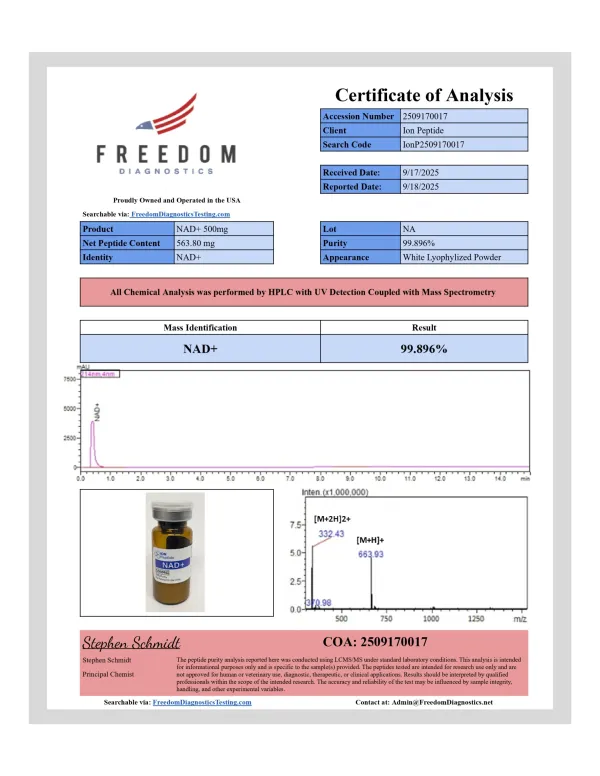
Related products
-
DSIP
$ 24.95 – $ 65.00Price range: $ 24.95 through $ 65.00 Select options This product has multiple variants. The options may be chosen on the product page -
Cagrilintide
$ 49.00 – $ 89.00Price range: $ 49.00 through $ 89.00 Select options This product has multiple variants. The options may be chosen on the product page -
BPC-157
$ 26.40 – $ 39.00Price range: $ 26.40 through $ 39.00 Select options This product has multiple variants. The options may be chosen on the product page

